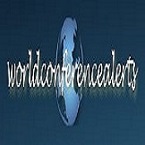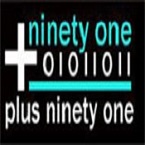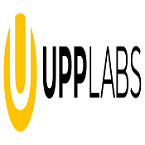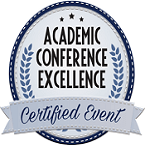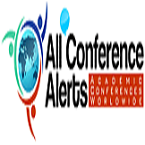Theme: Revealing Innovations in Cardiology for a Healthier Heart
World Cardiology 2023
WORLD CARDIOLOGY 2023 is great platform to explore your knowledge and learn new things from different people. In this fast growing economy an experts who have superior command on Cardiology, This is the best way to share your knowledge and skills all over the world.
We warmly welcome all the Researchers, Scientists, Social Workers to take part in our nursing congress to share their valuable research work in the form Oral and Poster Presentations.
WORLD CARDIOLOGY 2023 is a two-day hybrid event that is going to be held during May 29-30, 2023 as a webinar.
Criteria for being a Speaker (Oral/Poster)
- Need to be an Author/Co-author for the research article/work.
- Abstract Submission (250 Word limit)
- Registration Confirmation
World cardiology 2023 with designed for 100 attendees including below category slots.
|
Conference Dates |
Keynote Forum (Oral) |
Plenary Talks (Oral) |
Young Research Forum (Oral) |
Poster Presentation |
|
Day -01 (May 29, 2023) |
25 |
15 |
30 |
10 |
|
Day -02 (May 30, 2023) |
25 |
15 |
30 |
10 |
World cardiology 2023 provides an online platform for participants who are unable to attend the conference in Germany due to travel restrictions/VISA Issues/Prior Commitments for more info contact us through our Displayed what’s app Number or Conference Email. Id.
Track 01: Cardiology
A subspecialty of internal medicine is cardiology. In the US, a three-year internal medicine residency is followed by a three-year cardiology fellowship to become a cardiologist. In a sub-specialty, one might become even more specialised. Cardiac electrophysiology, echocardiography, interventional cardiology, and nuclear cardiology are recognised subspecialties in the US by the ACGME. Clinical cardiac electrophysiology and interventional cardiology are recognised subspecialties in the United States by the American Osteopathic Association Bureau of Osteopathic Specialists (AOABOS). In order to become a D.M/Diplomate of National Board (DNB) in Cardiology in India, one must first complete a three-year residency in General Medicine or Pediatrics after receiving their M.B.B.S. Adult cardiologists make $436,849 on average, according to Doximity in United states of America. A person's doctor could recommend them to a cardiologist if they exhibit signs of a heart issue.
Heart-related signs and symptoms include:
- breathing difficulty
- dizziness
- sternal pain
- alterations in heartbeat or rhythm
- blood pressure is high.
Tests for a cardiac murmur or an irregular heart rhythm can be performed by a cardiologist. Patients who have experienced a heart attack, heart failure, or other heart issues are frequently treated by them. They participate in the decision-making process for cardiac catheterization, angioplasty, and stenting.
Track02: Cardiovascular Diseases
With 17.9 million deaths per year, cardiovascular diseases (CVDs) are the leading cause of death worldwide. Coronary heart disease, cereWith 17.9 million deaths per year, cardiovascular diseases (CVDs) are the leading cause of death worldwide. Coronary heart disease, cerebrovascular disease, rheumatic heart disease, and other illnesses are among the category of heart and blood vessel disorders known as CVDs. Heart attacks and strokes account for more than four out of every five CVD deaths, and one third of these deaths happen before the age of 70.
Unhealthy eating, inactivity, usage of tobacco products, and abusing alcohol are the main behavioural risk factors for heart disease and stroke. Individuals may experience elevated blood pressure, elevated blood glucose, elevated blood lipids, as well as overweight and obesity as a result of behavioural risk factors. "Intermediate risk factors" like thesebrovascular disease, rheumatic heart disease, and other illnesses are among the category of heart and blood vessel disorders known as CVDs. Heart attacks and strokes account for more than four out of every five CVD deaths, and one third of these deaths happen before the age of 70. Individuals may experience elevated blood pressure, elevated blood glucose, elevated blood lipids, as well as overweight and obesity as a result of behavioural risk factors. "Intermediate risk factors" like these can be measured at primary care facilities and show a higher risk of complications like heart attack, stroke, and heart failure.
It has been demonstrated that reducing the risk of cardiovascular disease involves quitting smoking, cutting back on salt in the diet, eating more fruits and vegetables, engaging in regular physical activity, and abstaining from problematic alcohol consumption. For people to adopt and maintain healthy behaviours, health policies that foster environments where healthy options are both affordable and accessible are crucial.
Premature deaths can be avoided by identifying those who are most at risk for CVDs and ensuring they receive the proper care. To guarantee that people in need receive treatment and counselling, access to noncommunicable disease medications and basic health technologies in all primary healthcare facilities is crucial.
Track 03: Heart Surgery
Cardiovascular surgery, often known as cardiac surgery, refers to operations on the heart or large blood vessels. It is frequently used to treat congenital heart disease, valvular heart disease from many sources, including endocarditis, rheumatic heart disease, and atherosclerosis, as well as consequences of ischemic heart disease (for instance, after coronary artery bypass grafting). Additionally, heart transplants are part of it.
- Open Heart Surgery: Any type of surgery in which the rib cage is opened and the heart is operated on requires a significant incision (cut) in the chest. The chest, not the heart, is what's meant by "open." The surgeon might additionally open the heart, depending on the type of operation. The limitations of hypothermia in cardiac surgery led to the development of cardiopulmonary bypass: In addition to heart and lung function, the patient also needs blood flow to the body (especially to the brain) since complex intracardiac repairs take time.
- Modern beating-heart surgery: Off-pump coronary artery bypass, which is performed without cardiopulmonary bypass, was first used by surgeons in the early 1990s. In these procedures, the heart continues to beat throughout surgery but is stabilised to enable a nearly silent work area where a conduit channel that bypasses a blockage can be connected. The Saphenous vein is a conduit channel that is frequently utilised. Endoscopic vessel harvesting, a method, is used to extract this vein (EVH).
- Heart Transplant : A frog and a dog's hearts were successfully transplanted into one another in 1945 by Soviet doctor Nikolai Sinitsyn. Although Christiaan Barnard, a South African cardiac surgeon, performed the world's first adult heart transplant using methods created by Shumway and Richard Lower, Norman Shumway is largely recognised as the founder of human heart transplantation.On December 3rd, 1967, Barnard performed the first transplant at Groote Schuur Hospital in Cape Town on Louis Washkansky Just three days later, on December 6, 1967, Adrian Kantrowitz conducted the first juvenile heart transplant at Brooklyn's Maimonides Hospital (now Maimonides Medical Center). At Stanford University Hospital, Shumway performed the country's first adult heart transplant on January 6, 1968
Track 04: Electrophysiology
An electrophysiology (EP) examination is a test used to identify irregular heartbeats or arrhythmias. It evaluates the electrical system or activity of your heart. Catheters are inserted into blood vessels that enter the heart, and after that wire electrodes, which measure electrical activity, are inserted.
Please go to Preparing for the EP Study for details on how to be ready for the electrophysiology (EP) study.
The final preparations for the EP study are as follows when you get to the hospital:
- For your comfort, be sure to completely empty your bladder. During the procedure, a bedpan or urinal will be offered. A catheter may be used to drain your bladder of urine during the procedure, depending on how long your precedure was.
- If medication administration is required, a tiny intravenous (IV) needle will be placed into a vein in your arm.
Track 05: Heart Failure and Transplant Cardiology
Heart Failure and Transplant Cardiology focuses on managing advanced or difficult heart failure outside the realm of what is often offered by general internists and general cardiologists. It is an advanced training in cardiovascular illness. The capacity to use a wide range of electrophysiologic and hemodynamic support devices, complex percutaneous and surgical procedures, and the ability to treat patients with difficult-to-control heart failure are all included in this. Prospective heart transplant candidates are also evaluated.
Cardiologists who specialise in heart failure and transplantation frequently work in settings that include cardiology clinics and facilities that offer cardiac transplantation. However, a large part of practise is frequently providing consulting and comanagement services to other doctors who are managing patients with heart failure.
Developing competence in the management of patients with severe heart failure and cardiac transplantation is the goal for our fellows. This comprises:
- Patients with cardiomyopathy: These should be diagnosed and treated for new-onset congestive heart failure. Fellows will also learn how to use endomyocardial biopsy when necessary. They will face uncommon disorders such cardiac sarcoidosis, cardiac amyloid, and acute myocarditis.
- Management of patients with severe congestive heart failure: As patients progress into the most serious phases of illness, fellows are essential to their care. Fellows are involved in every stage of the evaluation and administration of assistive devices and transplants. This covers the transplant and assist device selection process. Rejection, opportunistic infections, and transplant coronary disease are common issues that arise during pre- and perioperative surgical treatment as well as long-term therapy. On the device side, fellows will develop proficiency in controlling assist device issues and upholding long-term care
- Outpatient care: Fellows take part in a continuity clinic under the direct supervision and presence of an attending physician. The principal cardiologist for a cohort of patients assigned to fellows will be that person. Fellows will coordinate and oversee cardiac care.
Track 06: Diabetics, Obesity and stroke
Stroke is a significant contributor to morbidity and mortality as well as a financial burden. Two significant modifiable risk factors for stroke include diabetes and obesity. Diabetes patients are more likely to experience strokes and have worse post-stroke prognoses. The most crucial component of preventing stroke in people with diabetes and obesity is risk-factor management. This includes modifying one's way of life and using various therapeutic modalities to manage diseases like diabetes, hypertension, dyslipidemia, and arrhythmia. Even in diabetic individuals with low-density lipoprotein cholesterol levels that are close to normal or normal, recent groundbreaking investigations have demonstrated the positive effects of statins. It has been established that obesity, which increases the risk of diabetes, hypertension, and hyperlipidemia, also poses a risk for stroke. dysregulation of adipocyte proteins, elevated leptin, and both. The rise in cardiovascular morbidity and death directly linked to obesity may be caused by insulin resistance and C-reactive protein. Subcutaneous fat poses a significantly smaller health risk than visceral fat. Obesity management strategies have included both pharmacotherapeutic drugs and lifestyle changes. Surgical surgery appears to be the best course of treatment for patients who are severely obese and have long-lasting good metabolic results. With today's cutting-edge medical knowledge and therapy options, it should be possible to lower the incidence of stroke brought on by diabetes and obesity.
Track 07: Atherosclerosis
Although the phrases artery and atherosclerosis are occasionally used interchangeably, they have different meanings. When the arteries—the blood channels that transport oxygen and nutrients from the heart to the rest of the body—become thick and stiff, blood flow to the organs and tissues may occasionally be restricted. This condition is known as arteriosclerosis. Flexible and elastic arteries indicate good health. However, the artery walls can stiffen over time, a phenomenon known as arterial hardening. Arteriosclerosis has a particular subtype called atherosclerosis.
The accumulation of lipids, cholesterol, and other chemicals in and on the artery walls is known as atherosclerosis. The accumulation is known as plaque. Atherosclerosis can constrict the arteries and obstruct blood flow. The plaque may rupture and cause a blood clot.
Even while atherosclerosis is frequently associated with heart issues, it can impact arteries throughout the body. You can get atherosclerosis cured. Adopting a healthy lifestyle can help stop atherosclerosis.
Atherosclerosis is a condition that becomes worse over time and can start as early as childhood. The precise reason is not known. It could begin with harm or injury to an artery's inner layer. The following things could harm:
- Unknown causes of inflammation or inflammation brought on by conditions such inflammatory bowel disease, lupus, psoriasis, or arthritis
Blood cells and other substances may congregate around the location of the lesion and accumulate in the inner lining of the artery when the inner wall of an artery has been injured.
On the inside of the cardiac arteries, lipids, cholesterol, and other chemicals build up over time. The accumulation is known as plaque. The arteries may narrow due to plaque, preventing blood flow. The plaque may rupture and cause a blood clot.
Track 08: Ventricular septal defect
A frequent birth defect in the heart is called a ventricular septal defect (VSD), which is a hole in the heart (congenital). Blood can flow from the left to the right side of the heart due to a hole (defect) in the septum, the wall dividing the heart's lower chambers (ventricles). The heart has to work harder since the oxygen-rich blood is then returned to the lungs rather than the body.
Many minor VSDs close on their own, and a little VSD may not even cause any issues. To avoid difficulties, surgical correction of medium or larger VSDs may be necessary early in childhood. Congenital heart defects result from issues early in the development of the heart, however there is frequently no known reason. Environmental and genetic variables may both be important. Both VSDs and other congenital cardiac abnormalities are possible occurrences.
A ventricular septal defect develops during foetal development when the muscular septum that divides the heart's lower chambers into its left and right sides does not fully form (ventricles).
Normally, the left side of the heart pumps oxygen-rich blood to the rest of the body while the right side pumps blood to the lungs to get oxygen. The mixing of oxygenated and deoxygenated blood those results from a VSD raises blood pressure and increases blood flow in the arteries that supply the lungs. As a result, the workload for the heart and lungs.
Track 09 : Cardiovascular Tech
A cardiovascular technician performs intricate treatments in a cardiac cath lab, such as the implantation of stents, the setting up of cardiac pacemakers and defibrillators, as well as other heart disease diagnostic testing. They respond to emergency calls and help save the lives of people undergoing heart attacks.
There are three possible practise specialisations for cardiovascular technologists:
To earn an associate's or bachelor's degree as a cardiovascular technologist, you must attend college. Following a year of core coursework, students spend a year receiving specialised education in one of the following specialties:
- For students who intend to work in a cardiac catheterization lab or with the cardiac catheterization suite, which occasionally includes electrophysiology, invasive cardiology is a necessary skill.
- For students who want to work with Holter monitors, stress tests, and pacemakers, noninvasive cardiology
- For students who intend to work with cardiovascular ultrasound, noninvasive echo cardiology
- For students who want to work in peripheral vascular cardiology, noninvasive vascular cardiology
Track 10: Artificial Intelligence in Cardiology
People who receive heart care from the Department of Cardiovascular Medicine at Mayo Clinic gain access to cutting-edge research and knowledge in the field of artificial intelligence (AI) cardiology to enhance clinical care.
Nearly every aspect of contemporary life is impacted by AI, or artificial intelligence displayed by machines. This includes medicine. At the Mayo Clinic, AI is being used to programme computers to interpret data rapidly and consistently, resulting in better treatment outcomes. Uses include improving diagnostic imaging skills, quicker stroke treatment, and heart disease detection. A Mayo Clinic study, for instance, used AI approaches to develop a new screening tool for left ventricular failure in persons who don't have any obvious symptoms. 93% of the time, the screening tool with AI assistance detected persons at risk for left ventricular dysfunction. To put things into perspective, a mammogram is 85% accurate. These innovations supplement doctors' knowledge. In theory, AI cardiology enables doctors to spend more time with their patients and enhances collaborative decision-making by combining direct care and data analysis.
For the benefit of persons with heart disease and those who are at higher risk of developing it, Mayo Clinic is a pioneer in the push to integrate AI techniques and technology into clinical practise. The AI cardiovascular team at the clinic is utilising these new methods to diagnose and predict early risk factors for major and complex heart issues.
Track 11: Robotic Heart Surgery
Robotic cardiac surgery involves doing heart surgery through a very small chest incision. Surgeons can do cardiac surgery that is significantly less invasive than open heart surgery by using tiny instruments and robot-controlled tools. Because of the name of the company that makes the robot that is frequently used for this technique, the procedure is occasionally referred to as "da Vinci surgery."
Numerous heart-related treatments, such as valve surgery, coronary artery bypass, cardiac tissue ablation, heart defect repair, and tumour excision, have been performed using robotic surgery.
Robotic cardiac surgery is less intrusive than open heart surgery, which is its key advantage. You can heal more quickly and get back to your activities more quickly with smaller incisions.
If you require an arterial bypass to increase blood flow to your heart, your doctor may advise robotic cardiac surgery. It can also be applied to
- Fix or exchange stiff or faulty heart valves
- Correcting the common arrhythmia of atrial fibrillation
- Take out the heart tumour
- Treat inherited heart defects
Other factors may have led your doctor to advise robotic heart surgery.
Track 12 : Cardiology - Future Medicine
The WHO estimates that 17.9 million people die from cardiovascular illnesses each year, or 32% of all deaths worldwide. They are also thought to be the most expensive illnesses to treat. They are known as the "silent pandemic" because of this characteristic as well as the fact that they take time to manifest symptoms.
Tobacco use, excessive alcohol consumption, a poor diet, and a lack of physical activity can all cause hypertension, increased blood glucose levels, overweight, and obesity, which can all lead to heart attacks, strokes, or other severe cardiac diseases in the future.
The key to prevention would be early detection, but because it can be challenging to spot the early indicators of heart disorders, this could only be achieved through continuous monitoring. This is why it has been so difficult to till the introduction of portable, user-friendly digital technologies, continue the fight.
- The advantages of the speaker and abstract pages are created in Google on your profile under your name would get worldwide visibility.
- Our comprehensive online advertising attracts 30000+ users and 50000+ views to our Library of Abstracts, which takes researchers and speakers to our conference.
- Meet with hundreds of like-minded experts who are pioneers in world cardiology 2023 and share ideas.
- All participants in the conference would have a different reason to participate with eminent speakers and renowned keynote speakers in one-to-one meetings.
- A rare opportunity to listen what the world's experts are learning about from the world's most influential researchers in the area of cardiology at our Keynote sessions.
- World Cardiology 2023 intensive Conference schedule, you will acquire experience and expertise in strategic gift preparation that is worth its weight golf, forming an impressive array of recognized professionals.
- Best Poster Award nominations.
- Award for Outstanding young researcher
- Group Registration Advantages.
Benefits of Participation for Speaker
- Worldwide appreciation of the profile of research
- Obtain credits for professional growth.
- Explore the latest of cutting edge analysis.
- Make long-term bonds at social and networking activities.
- An ability to advertise one page in the distribution of abstract books and flyers that ultimately gets 1 million views and adds great value to your research profile.
- Learn a transition beyond your area of interest to learn more about new subjects and studies away from your core subject of cardiology
- We have distinctive networking, learning and enjoyable integration into a single package.
Benefits of Participation for Delegate
- Professional Development-Improve understanding and knowledge
- Attendance at conferences supports rejuvenates and energizes delegates.
- Your involvement in our conference will help with a new methodology and ideology that can be used to broaden the outcomes of business or industries.
- Opportunities for cardiology 2023 researchers and experts in the same field to meet and exchange new ideas through a Cardiology conference
Benefit of Participation for Sponsor
- Exposure to the international environment would increase the possibility of new companies
- Opportunity to demonstrate your company's latest technologies, new products, or service your business to a wide range of international participants.
- Increase business by our conference participants through lead generation.
- It takes a lot of time, effort and drive to create a successful company, so it's always nice to have a network of colleagues and associates to draw energy from individuals who share a common drive and objective.
- Conferences in cardiology provide opportunities for more attention and contemplation that could help you move your company to the next stage.
- Benchmarking main organisation plans
Cardiovascular devices are utilized to treat cardiovascular ailments that incorporate various issues, the greater part of which are identified with atherosclerosis. Atherosclerosis is a prescription state where a substance called plaque develops in the dividers of the conduits. It contracts the veins, making it harder for blood to move through and influences the ordinary supply of blood and reasons heart assault. Heart assault happens when the blood stream of the heart is hindered by blood coagulation. Other cardiovascular illnesses, for example, ischemic stroke and heart disappointment, happen when a vein is hindered by a cluster. Moreover, heart disappointment, in some cases called congestive heart disappointment, implies that the heart is not pumping blood appropriately. Arrhythmia is additionally one of the major cardiovascular ailments, typically portrayed by a strange mood of the heart. To beat these issues, different cardiovascular devices are utilized to analyse and treat heart infections.
Larger markets for cardiovascular devices in Germany are due to increasing awareness about various heart diseases in the region and the increasing number of aged people. The number of cardiac procedures performed increased steadily over the five years to 2018, providing overwhelming demand for operators in the Cardiologists industry. In particular, the growing burden of cardiovascular disease fostered increased demand. In addition, increasing rates of obesity and an aging baby-boomer population have resulted in an uptick in heart-related conditions. As a result, the early onset of chronic health conditions, such as heart disease, hypertension and diabetes, bolstered demand for industry services. Improving economic conditions through 2022 are expected to underpin steady growth for cardiologists, though profit pressures will encourage consolidation in the industry.
The "Children's Heart Center of Nevada Pediatric Research Fund," in the amount of $100,000 over 10 years, will be used to stimulate new research activities among faculty, according to David Gremse, M.D., chair of the School's pediatrics department in Las Vegas. Children's Heart Center serves Nevada with five offices in Southern and Northern Nevada as well as various outreaches clinics. No child in need of services is turned away for any reason. Nevada has 194 active physicians per 100,000 people. The average U.S. rate is more than 260 doctors per 100,000. The Nevada State Medical Association estimates a need for almost double the number of primary care physicians, not including specialists or subspecialists, in the next 15 years. According to the Dartmouth Institute of Health Policy and Clinical Practice, a coalition to study health care, there are 9.6 pediatricians per 100,000 people in Reno and 8.8 primary care pediatricians per 100,000 in Las Vegas. With the national average of 15 pediatricians per 100,000 people — 32 per 100,000 in San Francisco — estimates show that Nevada could easily accommodate twice as many pediatricians.
The field of Cardiology is a medical specialty responsible for the diagnosis of disease, treatment and prevention measures of cardiovascular disease. Cardiologists study the dysfunctions of the heart, but the study of adult and child heart disorders are through dissimilar training pathways. Therefore, an adult cardiologist (often unqualified and called just "cardiologist") is not fully trained to take care of children, and pediatric cardiologists are inadequately trained for adults. The surgical feature are not included in cardiology and are in the discipline of cardiothoracic surgery, For example, Cardiopulmonary bypass and Coronary artery bypass surgery are two surgical procedures performed by surgeons, not cardiologists.
Conference Highlights
To share your views and research, please click here to register for the Conference.
To Collaborate Scientific Professionals around the World
| Conference Date | May 29-30, 2023 | ||
| Sponsors & Exhibitors |
|
||
| Speaker Opportunity Closed | |||
| Poster Opportunity Closed | Click Here to View | ||
Useful Links
Special Issues
All accepted abstracts will be published in respective Our International Journals.
Abstracts will be provided with Digital Object Identifier by





